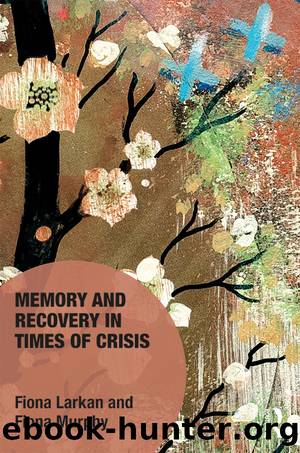Memory and Recovery in Times of Crisis by Fiona Larkan Fiona Murphy

Author:Fiona Larkan, Fiona Murphy [Fiona Larkan, Fiona Murphy]
Language: eng
Format: epub
ISBN: 9780367271787
Barnesnoble:
Publisher: Taylor & Francis
Published: 2019-03-21T00:00:00+00:00
p.101
Tracing narrative constructions of âcolourednessâ
This section examines collective memories through narratives and discourses around Coloured lives, and engages the conceptual framework outlined in the previous section in order to determine how these contribute to the construction of Coloured identity in post-Apartheid South Africa. Here, collective memories are discerned on the basis of a close evaluation of group representations through memorials they chose (or chose not) to erect. Building on Wilkinsonâs (1996) assertion that âevidence is everywhereâ (pp.80â81), including idiomatic and artistic expressions of identity, this section follows three key strands of narrative. Each of these narratives surrounding Coloured identity converges at the former cosmopolitan locality of District Six and finds artistic expression through the historic District Six museum.
District Six
As early immigrants arrived to South Africa from as far afield as Russia, India, China, Australia, Scotland, Egypt, the Caribbean and Turkey, District Six served as a âdoorstep dormitoryâ (Hall, 2001, p.298) due to its close proximity to Cape Town harbour. At District Six, immigrants mixed with locals, freed slaves, descendants of Khoi and San peoples, and those that had migrated from other parts of South African, particularly the Eastern Cape. Originally, District Six was known locally as Kanaladorp, which, according to Soudien (2001b, p.99), is believed to derive from the Melayu-Portuguese word kanala meaning âan appeal for helpâ and the Afrikaans word dorp meaning âvillageâ.
Between 1960 and 1983 more than 3.5 million people were forcibly removed from their homes throughout South Africa, and resettled in segregated areas according to their ascribed racial classifications. In District Six these removals took place between 1968 and 1982 with over 60,000 members of the Coloured community forcibly removed and relocated at the Cape Flats â a barren, inhospitable landscape some 25 kilometres away from Cape Town. Unlike other Coloured areas de-populated under Apartheid, most of District Six was left undeveloped after the demolition of homes. Various organizations and amalgamations of residents associated declared the land âsalted earthâ and sought to ensure that no development took place without the involvement of former residents. These combined efforts were partially successful, in that the churches and mosques remained, and the Cape Technikon (built later) occupies only a part of the land. In much the same manner as World War II memorialsâ inclusion of ruins or shelled buildings to convey the shock of violence, District Six, in its mined state, remained testament to the devastation caused by the apartheid government. Indeed McEachern (1998) suggests that it is precisely this absence that makes possible the inscription of so many meanings and narratives onto District Six.
Download
This site does not store any files on its server. We only index and link to content provided by other sites. Please contact the content providers to delete copyright contents if any and email us, we'll remove relevant links or contents immediately.
A Mind For Numbers: How to Excel at Math and Science (Even If You Flunked Algebra) by Barbara Oakley(3221)
Limitless by Jim Kwik(3087)
Fluent Forever: How to Learn Any Language Fast and Never Forget It by Gabriel Wyner(3031)
The Marketing Plan Handbook: Develop Big-Picture Marketing Plans for Pennies on the Dollar by Robert W. Bly(2977)
Remember It! by Nelson Dellis(2709)
The Mind Map Book by Tony Buzan(2512)
Memory Rescue by Daniel G. Amen(2378)
The Memory Code by Lynne Kelly(2355)
Super Reading Secrets by Howard Stephen Berg(2004)
Boost Your Brain Power in 60 Seconds by Michelle Schoffro Cook(1951)
Memory Rescue: Supercharge Your Brain, Reverse Memory Loss, and Remember What Matters Most by Amen Dr. Daniel G(1948)
Brain Training: How To Learn and Remember Everything (Neuro Linguistic Programming, Remember Everything, Increase memory, How To Remember Book 1) by Lynch George(1829)
How We Learn: The Surprising Truth About When, Where, and Why It Happens by Carey Benedict(1758)
You Can Have an Amazing Memory by Dominic O'Brien(1749)
The Mechanism of Mind: Understand how your mind works to maximise memory and creative potential by Edward de Bono(1743)
The Old Farmer's Almanac 2020 by Old Farmer’s Almanac(1661)
The Brain Boost Diet Plan by Christine Bailey(1615)
How to Develop a Perfect Memory by Dominic O'Brien(1576)
Master Your Memory by Ron Fry(1503)
